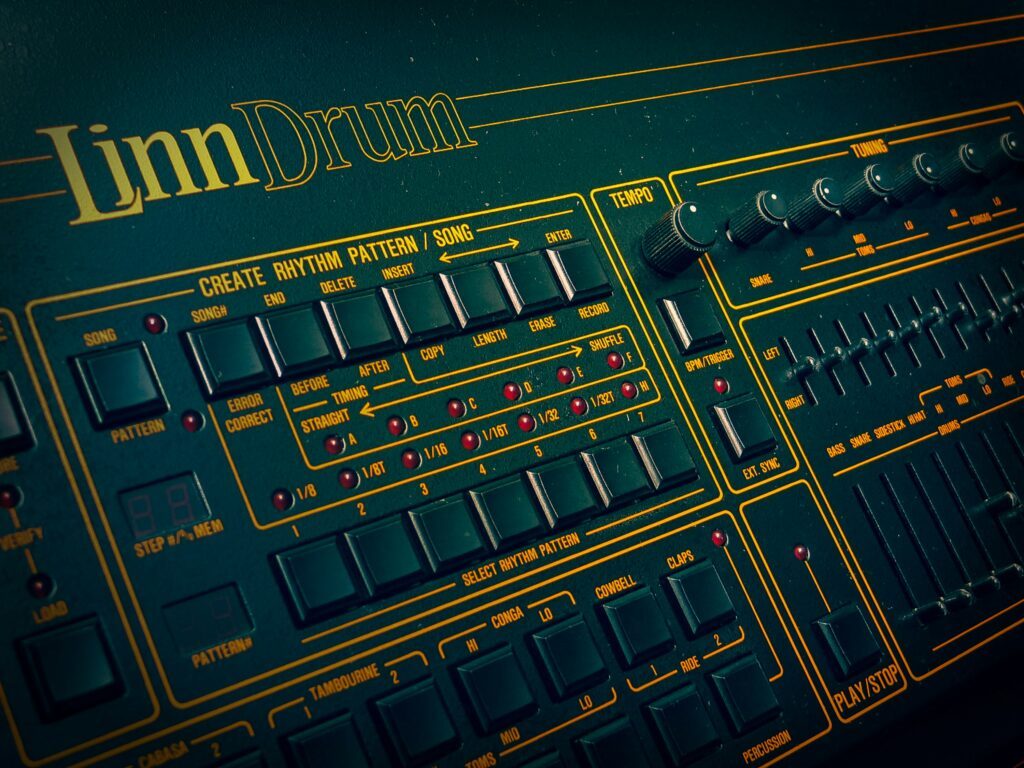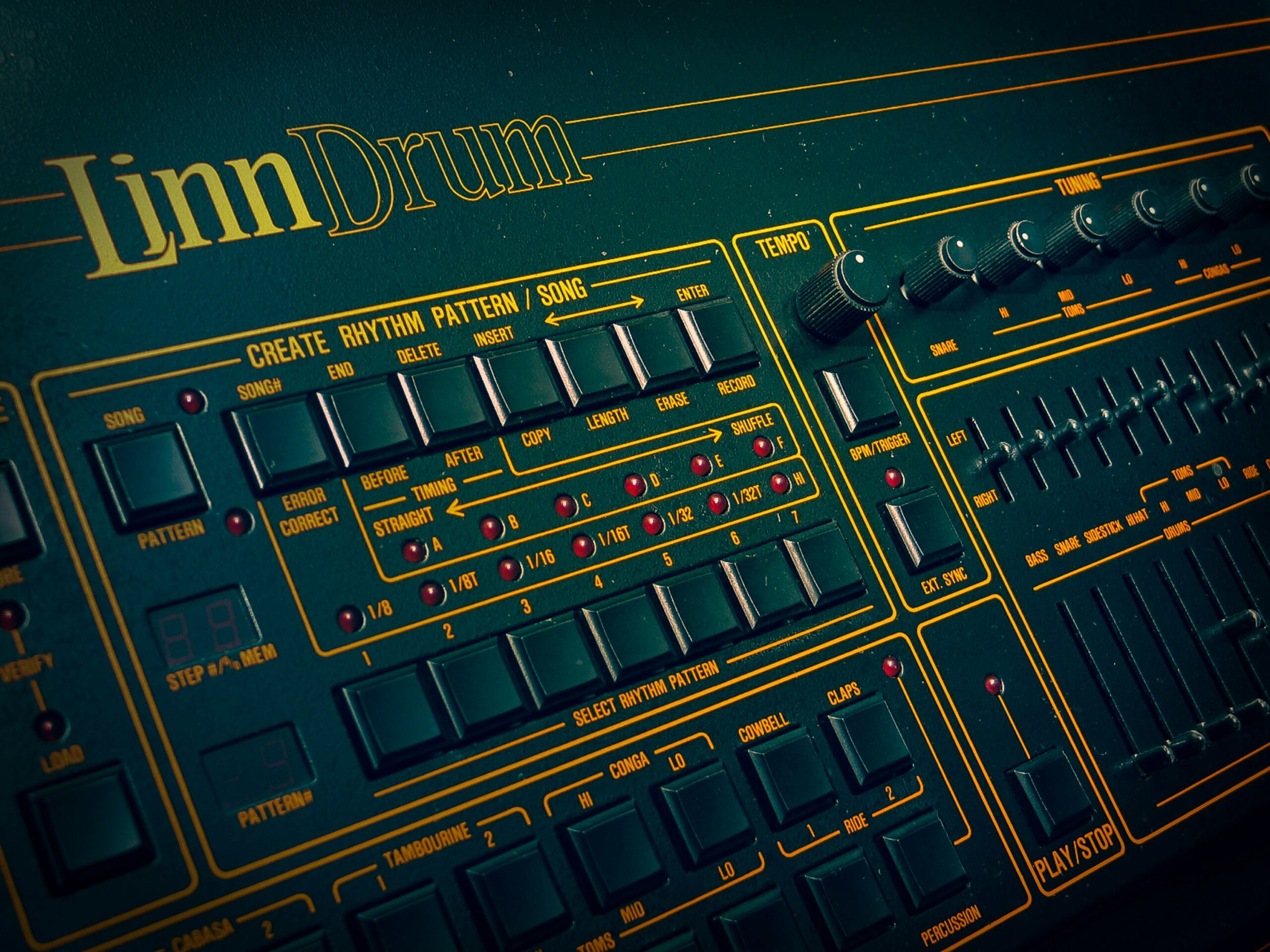What is it About the New Wave Music Genre?
After the destructive nature of (British) Punk Rock, New Wave offered something more constructive. It took the bits it wanted from punk – the DIY approach, the energy and so on – and fused them with the glamour of the early seventies. It then added a splash of social consciousness and a dash of social commentary.
Intro: Setting the New Wave Scene
If I may, I’d like to start things off by giving you my take on what New Wave music really was. Born out of punk in the late 70s, it was a vibrant and eclectic mix of styles that both dovetailed from punk’s raw energy and stood apart from it. This isn’t just about the fast beats and defiant lyrics of punk; New Wave also embraced a more polished sound and a quirky aesthetic that punk generally avoided.

Melodic hooks, some incorporation of electronic elements, and the fusion of different genres are the key points that made New Wave stand out. Often seen as punk’s less angry cousin, New Wave artists were as much about catchy tunes and stylized looks as they were about musical innovation.
In my opinion, the genre’s influence was as much visual as it was auditory – that’s the early seventies glamour bit. It’s important to understand that New Wave wasn’t contained to just one sound or image. It encapsulated a spectrum ranging from the punk rock survivors of bands like The Pretenders (Chrissie Hynde worked at Sex, the boutique where the Sex Pistols amalgamated) to the synth-driven pop of groups like Depeche Mode.
Choose something that resonates with you, whether it’s the quirky lyrics/throbbing basslines of Talking Heads or the smooth harmonies of The Police, and that’s New Wave for you. It’s diverse, exciting, and always hard to pin down. But it’s also about the broader pop cultural context, from the fashion to the iconic music videos, that New Wave artists used to broadcast their distinct brand to the world.
There’s a lot of opportunity to investigate the history of this genre. For example, let’s have a look and explore the pioneers and icons of New Wave music in the next section. We’ll see just how deep the influence of these artists runs, not just in music, but the era’s entire cultural vibe.
Pioneers and Icons of New Wave Music
Considering New Wave, certain artists immediately spring to mind. These pioneers not only shaped the genre but also had a significant hand in the wider music scene. Bands like Talking Heads, Blondie, and The Cure injected a fresh, edgy sound into the emerging New Wave movement. Their innovative use of synthesizers and upbeat rhythms contrasted sharply with the heavier rock and punk that had dominated the previous decade.
Key albums like Parallel Lines by Blondie offered a combo of punk, disco, and pop that was irresistible to a wide audience. Talking Heads’ Remain in Light pushed boundaries with its experimental approaches. Songs such as Boys Don’t Cry by The Cure and Sweet Dreams (Are Made of This) by Eurythmics became anthems that defined the era, showcasing the versatility of New Wave sounds.

It wasn’t just about the music, though. New Wave’s visual appeal was just as strong as its auditory hooks. The artists dressed in sharp suits or flamboyant outfits; their bouffant hairstyles and makeup have since become iconic. Spandau Ballet, Duran Duran and Depeche Mode, for instance, were not just musicians but fashion trendsetters. MTV greatly assisted them, enabling the fusion of music and fashion, bringing New Wave into living rooms worldwide.
The global impact of New Wave can’t be underestimated. Bands like Japan and A-ha captured hearts with their sophisticated pop sensibilities in Europe and Asia. Meanwhile, in Latin America and the Caribbean, acts like Men at Work and Culture Club found legions of fans. New Wave was truly a global phenomenon, disregarding borders and leaving a lasting imprint on the music industry.
As the 1980s progressed, New Wave began to change – it had to. The spotlight started to dim as pop Svengalis, such as Stock Aitken and Waterman, reasserted themselves – think The Monkees and Bay City Rollers; then think Jason Donovan and Kylie Minogue, and Bros – manufactured, saccharine, anodyne, mass-marketed and controlled. Some New Wave artists faded from the limelight, while others adapted. Others, such as the Smiths were never meant to live for very long, but when they blazed, they blazed brightly.
Those that remained were stronger, and better set to continue into the future. Next, we’ll see how the New Wave went from the charts of mainstream success to dancing in the quieter corners of the underground music scenes.
The Evolution of New Wave: From Mainstream to Underground
New Wave’s sound, marked, amongst other things, by catchy melodies and synthesizer-infused tracks, was more than just radio-friendly; it became the defining music of the 1980s. But like all musical phenomena, such popularity wasn’t going to last forever. By the end of the decade, New Wave had begun to recede from the mainstream consciousness.
There were as many factors behind this shift as there were bands. The music industry’s relentless quest for fresh sounds led to an oversaturation of the market and eventually, listener fatigue. Additionally, the rising popularity of other genres, such as hair metal and the early signs of grunge, provided stiff competition.
Despite receding from radio, New Wave didn’t disappear; it morphed into a more underground movement. Bands that had once enjoyed chart-topping hits continued to create music, albeit with a smaller but devoted following. Moreover, the genre’s influence seeped into the blossoming indie and alternative scenes of the nineties. Where would Oasis and Blur, Radiohead, Gene, Echobelly, and so many others be without the influence of New Wave?
Now, let’s find out about the enduring impact of New Wave’s zeitgeist within today’s music landscape, and how it continues to resonate with both older aficionados and new listeners alike.
Revival and Renaissance: New Wave’s Modern Echoes
You could be forgiven for thinking of New Wave as a relic of the past, but guess what? Its influence is still strong in today’s music scene. To understand contemporary pop or indie music, a glance back at the synth-driven melodies and stylistic quirks of New Wave is essential. Here’s how the genre continues to make waves.
Modern artists aren’t just tipping their hats to New Wave, they’re infusing their music with its essence. Acts like The Killers and La Roux have brought the signature New Wave sound to the twenty-first century, winning over both old fans and new listeners. Brandon Flowers cites bands like Duran Duran, Pet Shop Boys, the Smiths, the Cars, and Depeche Mode as influences whilst Elly Jackson acknowledges Eurythmics and Depeche Mode as some of hers.
Remember, New Wave wasn’t then, and it isn’t now solely a musical feeling. Its aesthetics, from sharp suits to tucked-in Aran sweaters; from slick haircuts to vibrant graphics, have made a comeback in the fashion and design industries too. You’ll find the genre’s influence in today’s visual culture, from album covers to stage design.

There’s no danger that New Wave is a relic resigned to history’s dusty shelf. The resurgence of vinyl and special edition reissues allows a new generation to experience the crackle and pop of an era that defined cool. This website is, in great part, about the vinyl revival so let’s take a quick peek at why it’s more than just a nostalgia trip. Let’s see how it offers a tangible connection to music that streaming services can’t replicate.
Keeping the Beat Alive: New Wave’s Enduring Community
New Wave music, with its distinctive beat and eclectic style, hasn’t just left a legacy of catchy tunes and bold fashion. It’s cultivated a loyal fanbase that keeps the genre alive decades after its heyday. Across the globe, dedicated enthusiasts from all walks of life continue to celebrate the uniqueness of New Wave, from its synth-driven anthems to its post-punk undertones.
Online communities have become a hotspot for the New Wave faithful. Platforms like Reddit, Facebook groups, and specialized forums buzz with activity, as fans share rare recordings, reminisce about classic hits, and even arrange meet-ups. This connectivity has allowed New Wave music to do more than just endure; it’s thriving in a digital age where geographical boundaries no longer limit fandom.
Events like retro music nights, themed club events, and New Wave festivals provide spaces where the New Wave heartbeat is most noticeable. These events are not just nostalgia trips; they’re a testament to the genre’s lasting appeal and its ability to attract new listeners. Live performances by legacy New Wave artists, alongside tribute bands, ensure that the energy and spirit of the era remain tangible.
For those just discovering the wonders of New Wave or long-time fans looking to re-engage, there are ample resources available. Streaming services feature extensive playlists and the genre’s prominent presence on vinyl shelves in record stores showcases its sustained popularity.
But why is New Wave so prominent on vinyl shelves? Well, primarily, the genre emerged in the late 1970s and early 1980s and vinyl was the primary format for listening to music during that time. As a result, nostalgia for the sound and culture, the human behaviours of the time, mean that vinyl records offer a tangible connection to that whole period.
Then, there’s the aesthetics and sound quality. The artwork associated with New Wave music was often unique, with packaging that was designed to be appreciated in the larger format of vinyl records. It’s perhaps a cliché, but vinyl records offer a warmer, richer sound compared to digital formats like CDs or streaming. Once again, harking back to the time it was originally recorded, produced, and released to the public, this characteristic suits the analogue sound of New Wave recordings. Synths and other electronic instruments seem to sound more natural on vinyl.
Publications and documentaries offer deep dives into the New Wave world, ensuring that the conversation about this perennial genre continues. A work such as Simon Reynolds’ book Rip It Up and Start Again: Post-punk 1977-84 is well regarded by many. For example, Nicholas Lezard of the UK’s Guardian newspaper said, “I had never expected there to be a book on this subject; had I done so, I would never have dared to hope it could be as good as this.”
Then there are documentaries such as New Wave: Dare to Be Different, which tells the story of how New Wave was reintroduced back into the US from Europe via Long Island’s WLIR. With interviews from such New Wave luminaries as Eddie Lundon and Gary Daly of China Crisis, Lol Tolhurst of the Cure and many others, this celebrates the genre’s enduring influence on music and society.

So, there you go. New Wave music encapsulates more than a passing trend; it’s a vibrant, continuous dialogue between the past and the present. Its enthusiasts are helping to keep alive a sound that defies generational divides; to preserve a musical movement that is as electrifying now as it was at inception. So, if your heart beats to the rhythm of 80s synths or post-punk melodies, you’re not alone. The New Wave community is ready to welcome you into the fold and keep the music playing.

